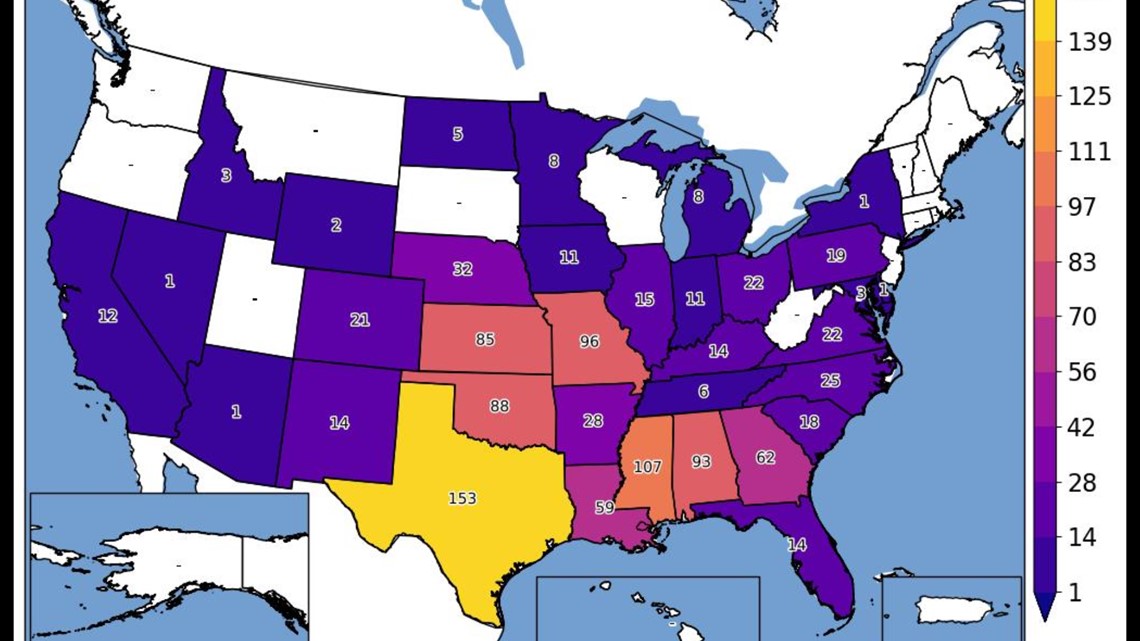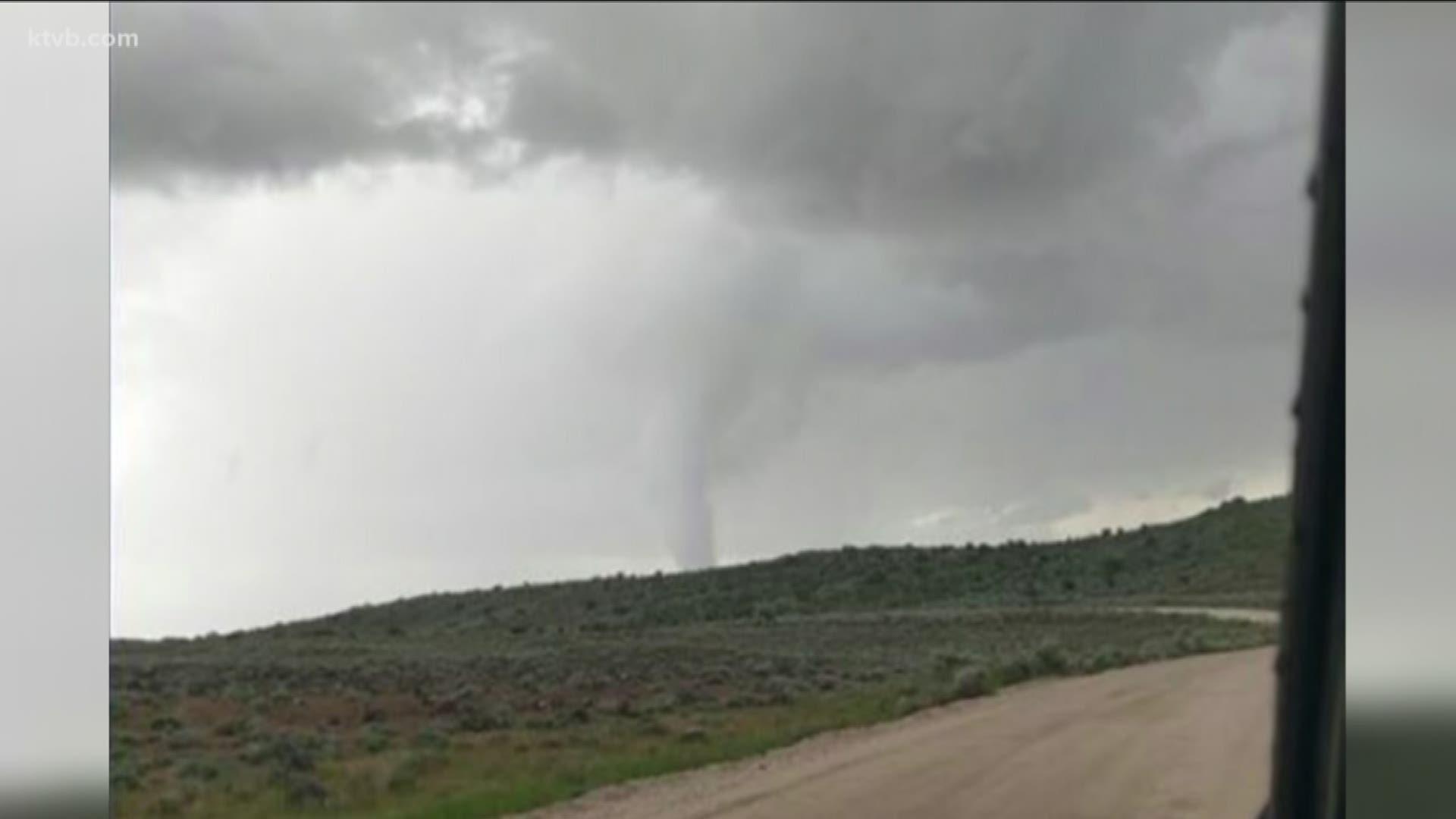BOISE, Idaho — On Monday, a tornado touched down about 14 miles east of Mountain Home. According to the National Weather Service, the tornado was an EF-0, which is the lowest possible level it can be. It didn't cause any visible damage to structures or properties, and there were no injuries.
Monday's tornado is the third to hit the state so far in 2019 and the first to touch down in Southwest Idaho since 2012. NWS meteorologist Mike Cantin tells KTVB that's not really higher than normal, with Idaho averaging one to two tornadoes per year.


Idaho's tornado season is typically between spring and early summer when the weather is most active.
When classifying tornadoes, the NWS uses the Enhanced Fujita Scale, which goes from 0 to 5. Meteorologists look at damage from the tornado to figure out its level.
“It’s generally based on damage to infrastructure, to surroundings," he said. "Could be trees, could be a home, sheds, things like that, fences. We use the damage, the amount of damage to get an estimate on wind speed.”
That wind speed is what helps classify it. Idaho tornadoes are usually a EF-0 or EF-1, Cantin said, and it's rare to see any higher than that in the Gem State.
When it comes to tornadoes, the Weather Service has specific characteristics it needs to see before issuing a public warning or alert.
“We want strong and tight circulation in the system,” Cantin said. "This is a signature that for us means there’s a real strong potential for a tornado – when you get the air that’s very close together traveling in opposite directions, creates a really strong circulation. That’s about the time when we issue the tornado warning.”
That's where local television stations like KTVB come in - getting the word out to the public.
One thing to keep in mind is the difference between a weather watch and a weather warning.
“A watch means we’re watching out, the potential for that kind of weather to happen at any given day, hours as it were," said KTVB meteorologist Bri Eggers. "A warning, that’s when we see it’s not only possible but it’s likely happening right now and there is likely an imminent danger.”
Just because severe weather may not sound as serious as a tornado, does not mean it should be ignored. Eggers said all weather watches and warnings should be taken seriously when issued, especially severe thunderstorms.
“A lot of people think a tornado warning would be worse and often times it is. It would mean stronger wind speeds but a tornado warning would give you rotation in the winds," Eggers said. "A severe thunderstorm warning is saying we’re seeing the potential for winds, even straight line winds, to get up to a power that could be damaging to life and property.”
If a tornado warning is issued, the Weather Service provides a map with a box surrounding the affected area. Anyone in that area should take cover, preferably in the lowest rooms of the home, like a basement. Also, stay away from windows and outside doors.
Above all, Cantin said, people should never go outside to try and watch a tornado or capture pictures of it because that can be dangerous.
Over the next two to three weeks, the weather service radar for the entire Boise area will also be down while the current 30-year-old radar dish is replaced with a new one. That will make tracking severe weather more challenging for the NWS, Cantin said. But it still has other tools like satellite and lightning trackers to utilize but they may not get as many details on the storm as the radar system usually gives. The new radar is expected to be up and running within a few weeks.
You can find the latest weather alerts on KTVB's severe weather page.

